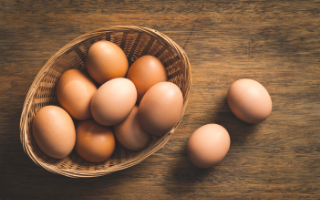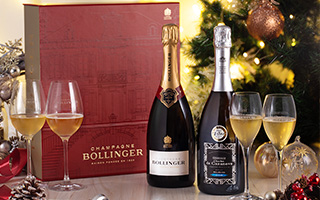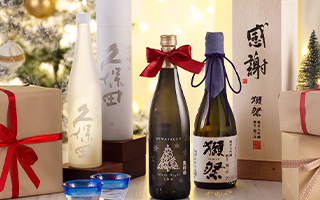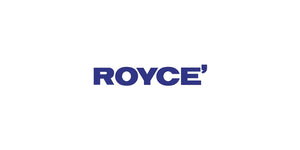Izumibashi

Home > Happenings > Cheers with Sake > Izumibashi
Izumibashi – The Symbiosis of Rice and Red Dragonflies
Tokyo is the trend capital of Japan – the things that you see, buy, eat and play in Tokyo will soon be popular around Japan and the rest of the world. What you might not notice is a place near the capital city called Kanagawa, where a brewery named Izumibashi is still using a century-old method to brew its sake and even cultivate its own sake rice. Its red dragonfly sake label might ring a bell, as it is cute, easily recognisable and symbolizes the brewery’s gratitude to mother nature. The Izumibashi Sake Brewery is also the registered Cultivation Brewery – a type of brewery that grows, harvests and mills its own rice – that is closest to Tokyo.
Brand Philosophy Sake Rice Cultivation Traditional Brewing Good Rice Makes Good Sake Pairing Suggestions

The Vision of the President – Sake Starts with Rice
Izumibashi Sake Brewery was founded with the name “Hashiba” by first-generation president Yuhachi Hashiba in 1857, during Japan’s Edo era. The company started as farmers growing table rice, with sake brewing just a side business. It was in 1956 when the fourth-generation president reopened the brewery after the war, the company was officially renamed as “Izumibashi Sake Brewery Co, Ltd”. The name is a combination of the “Izumi” in “Izumikawa”, a river north of the brewery, and the first kanji character from the original company name, “Hashiba”.
After the Great Hanshin earthquake in 1995, the current, sixth-generation president Yuichi Hashiba realised the importance of living in the moment; he then left his job in the financial industry and returned to run the family business. He believes that delicious sake starts with great sake rice, and that great sake rice begins with protecting the akatombo, the dragonflies that reside in the agrochemical-free rice paddies in Ebina: the brand’s icon and symbol of good luck in Japanese culture.
The Brewery in the City
The Izumibashi brewery is situated just 50 minutes by car from Ginza, Tokyo, in Ebina City, Kanagawa Prefecture. Despite the rapid development of the metropolitan area, Ebina City has maintained its rural scenery among the modern residential landscape. The paddy field area where the brewery is located has been famous for its fertile land since as long ago as the Jomon period, which ended in 300 BC. This edge, coupled with the vast variation in temperature in the inland area and the mineral-rich underground water, means the brewery enjoys a competitive advantage on both the farming and the brewing fronts.
Izumibashi’s president firmly believes that “sake starts with rice” and has therefore shifted its farmland from cultivating table rice to sake rice. The brewery also began partnering with local rice farmers to research sake rice growing based on the unique characteristics of the different soil varieties, and set up the Sagami Sake Rice Institute, integrating rice cultivation with the sake brewery business.

Generations-old Brewing Method
The brewery is committed to both the quality of the sake rice and the sake brewing technique. Using its own in-house sake rice milling machine ensures each rice variety is milled in the best possible way. Also, a traditional tool called a kojibuta is used to make koji at Izumibashi. This generations-old method requires three times the work of the modern approach, but it allows for the careful control of rice temperature and humidity according to different types of sake rice, ensuring the utmost quality of the ultimate sake.
The implementation of this natural brewing method is a vivid demonstration of how Izumibashi cares for the preservation of the local ecology, with half of the sakes produced every year made using the kimoto-zukuri technique. This traditional method from the Edo era (1603-1867) requires tremendous time and manpower to carry out a natural brewing process called “yama-oroshi”. Brewery workers mash the sake rice repeatedly to produce natural lactic acids as yeast, which results in the profound flavour profile of Izumibashi’s sakes.
The Charisma of Junmai Sake
Cultivating and brewing as part of the same operation is not an easy path to take. During wartime, in 1942, the Japanese government rolled out the Food Control Law to avoid shortages of staple commodities; rice farmers could only sell their rice to the government. It was only in 1995 that this regulation was relaxed and Izumibashi Brewery could resume brewing its sake with its cultivated sake rice. Thanks to the brewery’s respect for the natural environment, most Izumibashi sakes are known for their complex and rich flavours, bursting with the umami of the sake rice and the lactic acid produced using the kimoto-zukuri technique.
In addition to sake, the brewery also produces umeshu with plum-infused junmai. The Yamada Juro, made from Yamada Nishiki rice and Juro plum, is well-loved for its refreshing plum aroma and comforting taste. It was also one of the reasons why the company’s president decided in 2006 to focus solely on Junmai sake production. Together with the registration of the Cultivation Brewery trademark, the brewery has successfully positioned itself as an integrated cultivation-cum-brewing Junmai sake producer.


Pairing Recommendations
With the aim of showcasing amazing sake and natural ingredients from Kanagawa, the brewery runs a restaurant called “Kuramoto Kakō Izumibashi”, serving cuisine that pairs well with Izumibashi sakes. It is well-liked by local diners, who can expect a brand new fine-dining experience every time they visit, with the sumptuous menu created using locally produced, seasonal ingredients.
The following are pairing recommendations from the brewery and our team of professional sake sommeliers:
Izumibashi Raku-Fumai Junmai Daiginjo
- Awarded Platinum Medal at the 2020 Kura Master Sake Competition in France
- Made with Raku-Fumai rice cultivated in Kanagawa, and brewed using the traditional Kimoto brewing technique. It features an elegant rice aroma, a rich, round mouthfeel and a smooth, lingering aftertaste
- Recommended pairing: Italian cured ham and melon – a perfect combination of the fragrant rice flavour of Junmai Daiginjo and the aroma of cured ham
- Nose
- Floral & Fruity
- Palate
- Refreshing
- Soft
- Elegant
- Mellow
- Full-bodied
- Aftertaste
- Dry
- Off-dry
- Sweet
- Savoury
- Complex
Izumibashi Pink Tombo Kimoto Junmai
- Aged for two years, featuring robust umami and round mouthfeel
- Best served warm to bring out the flavours of the food
- Recommended pairing: Japanese seafood soup – the soft aroma and smooth flavour of the warm Kimoto Junmai help elevate the sweetness and umami of the Japanese seafood soup
- Nose
- Grain & Cereal
- Palate
- Refreshing
- Soft
- Elegant
- Mellow
- Full-bodied
- Aftertaste
- Dry
- Off-dry
- Sweet
- Savoury
- Complex
Izumibashi Megumi Junmai Ginjo
- Awarded Gold Medal at the 2020 Kura Master Sake Competition in France
- Made with the Yamada Nishiki rice – the King of Sake Rice, featuring a refreshing finish which makes it perfect for pairing with food
- Recommended pairing: brings out the umami of white fish sashimi and raw oysters, and cleanses the palate when enjoyed with deep-fried and strongly flavoured dishes
- Nose
- Floral & Fruity
- Palate
- Refreshing
- Soft
- Elegant
- Mellow
- Full-bodied
- Aftertaste
- Dry
- Off-dry
- Sweet
- Savoury
- Complex




















































